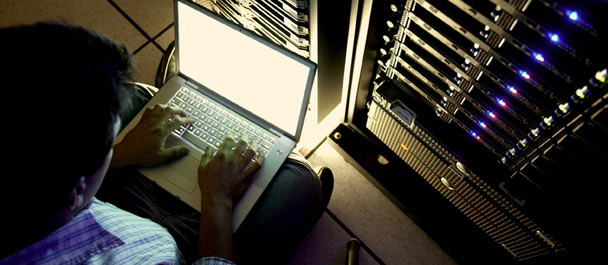
Scientific Lectures //
Whiplash – is it just a ‘crash for ca$h’ condition?
James Elliott, PT, PhD. Assistant Professor- Neuromuscular Imaging Lab, Feinberg School of Medicine at Northwestern University
Presented: April 16, 2014
ABSTRACT: Data from the Center’s for Disease Control indicates that over 4-million adult drivers and passengers are treated in US emergency medicine departments annually for whiplash as the result of a motor-vehicle accident. Most individuals recover spontaneously, but 25% will, for reasons that are not clear, suffer from chronic whiplash-related disability. Estimated costs for medical and rehabilitative care for these patients with poor functional recovery are ~$100 Billion annually and no treatments have shown to positively influence their outcomes. In the vast majority of whiplash cases, structural damage on objective imaging is rarely associated with symptoms. The prevailing opinion remains that poor functional recovery is largely influenced by social, psychological and behavioral factors, not biological. While this may be the case in some, our preliminary data and previous work are at odds with the position that symptoms of chronic whiplash are purely related to psychosocial phenomena. In the 25% with poor functional recovery, we have demonstrated the rapid and early expression of muscle fatty infiltrates on MRI, signs of disturbed descending control, and muscle weakness which correlates with the severe-pain-related disability seen in the non-resolving subgroup. The 75% that recover spontaneously do not manifest such signs and symptoms, suggesting a more severe injury have occurred in this chronic group. The complex signs and symptoms, known as whiplash associated disorders (WAD), bear striking similarities to patients with incomplete spinal cord injury; raising the possibility that chronic WAD is an expression of an initial mild injury involving the spinal cord, in at least a subset of patients. Both groups present with a paralleled expression of muscle fatty infiltrates, signs of disturbed descending control, and muscle weakness. Disordered activity in the stress-response system has also been observed, providing a link between psychological and measurable biological processes that might explain the occurrence and maintenance of chronic WAD. The long-term goals of our interdisciplinary research program is to improve outcomes in WAD, but before this can be realized, it is crucial we, and all stakeholders, understand the biopsychological mechanisms underlying poor functional recovery in the 25% of individuals with a seemingly more complex injury whose symptoms persist. This new knowledge will set the stage for future studies investigating more objective quantitative assessments and the development of targeted science-based interventions that avoid stigmatization of the individual with chronic WAD as having (what some would say is) purely a psychosomatic pathology.
BIOGRAPHY: Jim completed his PhD at the University of Queensland, Brisbane Australia (UQ) in 2007. He was later awarded a UQ post-doctoral research fellowship working within the Centre for Research Excellence in Spinal Pain, Injury and Health, the Centre for Advanced Imaging. He is currently a tenure-track Assistant Professor in the Feinberg School of Medicine at Northwestern University in Chicago, Illinois and the principal investigator of the Neuromucsular Imaging Research Lab (http://www.nirl.nu). Jim is also an Honorary Senior Fellow in the School of Health and Rehabilitation Sciences at The University of Queensland, Australia.
His interdisciplinary research interests involve the use of magnetic resonance imaging applications to quantify physiological changes in the spinal cord and the temporal development of muscular degeneration following spinal trauma; central and peripheral pain processing and the role of inflammation in the development of persistent pain and disability following traumatic spinal injury; in particular, motor vehicle collisions.
Information shared in this lecture was requested be held from public access. MRN employees can access the presentation here.

